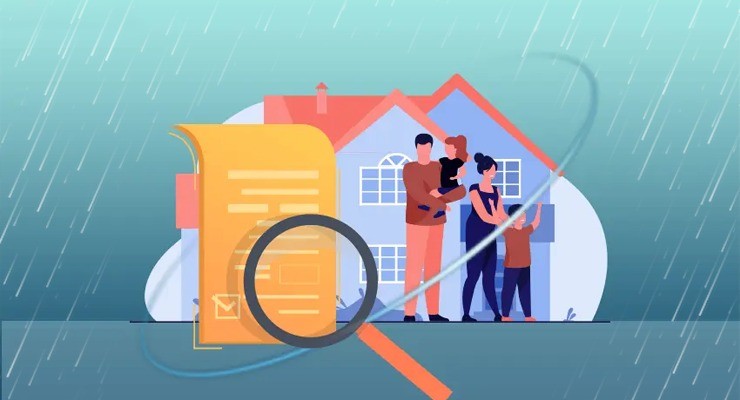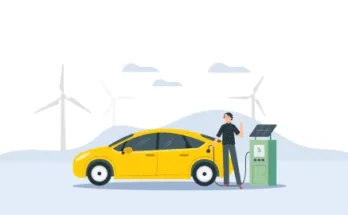Climate change is no longer a distant concern; it’s a reality that’s affecting every aspect of our lives, including property insurance. With extreme weather events becoming more frequent and severe, property owners are seeing a significant impact on their insurance policies. In this article, we’ll explore how climate change is influencing property insurance, what it means for homeowners, and what steps you can take to protect yourself and your property.
How Climate Change is Affecting Property Insurance
Climate change brings about more extreme weather conditions, including floods, hurricanes, wildfires, and severe storms. These events are increasing the frequency and intensity of property damage, making it more difficult for insurers to predict risks and set fair premiums. As a result, property insurance is becoming more complex, and both insurers and policyholders are facing new challenges.
Rising Weather-Related Risks
- Floods and Storm Surges: Rising sea levels and more intense storms are increasing the likelihood of coastal flooding and storm surges. Homes near coastlines are particularly vulnerable, and insurers are becoming more cautious about offering coverage in these high-risk areas.
- Wildfires: Drier conditions caused by climate change have led to an increase in the frequency and severity of wildfires. Properties located in wildfire-prone areas are facing higher premiums and, in some cases, difficulty obtaining coverage at all.
- Tornadoes and Hurricanes: More frequent and intense tornadoes and hurricanes are increasing the risk of property damage. Areas previously unaffected by such events are now being impacted, forcing insurers to reassess risk models and adjust their offerings.
Why Property Insurance Costs Are Rising
As weather-related risks continue to escalate, insurers are facing higher claims payouts and increased uncertainty. This has led to a rise in property insurance premiums and changes in policy offerings. Here’s why insurance costs are on the rise:
Increased Payouts for Claims
Extreme weather events cause widespread property damage, resulting in higher claims payouts for insurers. In 2020 alone, natural disasters caused more than $74 billion in damage in the United States. With rising damage costs, insurance companies must adjust their rates to ensure they can cover potential future claims.
- The Ripple Effect: Higher payouts from natural disasters don’t just affect the immediate region. Increased claims costs in one area can lead to higher premiums for homeowners across the country, as insurers adjust to cover rising costs.
Stricter Risk Assessment
Insurers are becoming more cautious when it comes to assessing risks in certain areas. Properties located in high-risk zones (e.g., floodplains, wildfire-prone areas, coastal regions) are being evaluated more carefully, and insurance companies may increase premiums to account for the increased likelihood of catastrophic damage.
- New Risk Models: Insurers are using more sophisticated risk models that take climate change into account, which may result in higher premiums for properties in vulnerable areas.
Limited Coverage Options
In some cases, insurance companies may choose to stop offering coverage in certain regions due to the increasing risk of extreme weather events. For example, areas that are frequently hit by wildfires or floods may find it harder to get coverage, or they may face limited options that come with higher premiums and higher deductibles.
- Availability Issues: In regions where insurers are unwilling to take on the increased risk, homeowners may need to turn to government-backed insurance programs or private insurers offering specialized coverage at higher costs.
How Homeowners Are Affected by Climate Change and Insurance
The impact of climate change on property insurance is felt directly by homeowners. As premiums rise, coverage options change, and risk assessments become more stringent, homeowners must adapt to the new realities of insurance in a changing climate.
Higher Premiums
The most immediate effect homeowners are noticing is the rise in insurance premiums. Insurance companies are increasing rates to offset the growing risk of climate-related damage. For homeowners, this can mean paying significantly more for the same level of coverage.
- Affordable Coverage: While premiums are increasing, there are ways to keep costs down. For example, bundling policies, increasing your deductible, or improving your home’s resilience to climate-related risks can help reduce premiums.
Difficulty in Securing Coverage
In some high-risk areas, securing property insurance can become a challenge. Insurers may refuse to offer coverage in certain zones, particularly those affected by frequent natural disasters like flooding or wildfires. Homeowners in these areas may struggle to find affordable coverage or may need to seek out specialized insurance providers.
- Non-Renewal of Policies: Some insurers are choosing not to renew policies for homeowners in areas most affected by climate change, forcing homeowners to search for new policies or risk being uninsured.
Impact on Home Values
In regions where climate change risks are high, property values may decrease due to the increased cost of insurance or the inability to secure coverage. Homebuyers may be reluctant to purchase homes in areas with high climate risks, leading to lower demand and declining property values.
- Resale Issues: As insurance costs rise and coverage becomes harder to obtain, homeowners looking to sell their property may face difficulties finding buyers who are willing to pay market value, further affecting the home’s resale potential.
Steps Homeowners Can Take to Protect Themselves
While the risks associated with climate change and property insurance are growing, there are proactive steps homeowners can take to protect their property and minimize the impact on their insurance premiums.
1. Evaluate Your Home’s Vulnerability to Climate Risks
Understanding the specific risks your property faces is the first step in protecting your home. Research local risks, such as floods, wildfires, or hurricanes, and assess how vulnerable your home is to each.
- Flood Risk: If your home is in a flood-prone area, consider purchasing flood insurance through the National Flood Insurance Program (NFIP) or a private insurer.
- Wildfire Risk: For homes in wildfire zones, consider implementing fire-resistant measures, such as installing firebreaks, using fire-resistant materials, and clearing vegetation around the property.
2. Upgrade Your Home to Be More Resilient
Mitigating risk by upgrading your home to withstand extreme weather events can help lower insurance premiums. Insurers often offer discounts for homes that are built or retrofitted to be more resilient to specific climate-related risks.
- Floodproofing: Elevating your home above flood levels or installing sump pumps can reduce flood damage risk.
- Windproofing: Installing impact-resistant windows or reinforcing your roof can help protect against storm damage.
- Fireproofing: Using fire-resistant building materials and creating defensible spaces can reduce the risk of wildfire damage.
3. Review and Update Your Insurance Coverage Regularly
As climate change risks evolve, it’s important to review your insurance coverage periodically to ensure it remains sufficient. Make sure your policy covers all potential risks, and be aware of any exclusions or limitations related to climate events.
- Regular Assessments: Work with your insurer to evaluate your coverage needs regularly and ensure your home’s insurance limits reflect the true cost of rebuilding or repairing after a disaster.
4. Consider Additional Coverage Options
If you live in an area with high climate-related risks, consider purchasing additional coverage options, such as separate flood or earthquake insurance, to protect your property.
- Supplemental Policies: Standard homeowners insurance doesn’t typically cover flood or earthquake damage, so you’ll need separate policies to protect against these types of risks.
5. Shop Around for Insurance Providers
Insurance rates and policies vary greatly between providers. It’s worth shopping around to compare options and find an insurer who offers competitive premiums for the coverage you need.
- Bundling Policies: Many insurers offer discounts for bundling multiple policies, such as home, auto, and flood insurance. Explore these options to lower your overall insurance costs.
Final Thoughts: The Growing Importance of Climate Resilience in Property Insurance
Climate change is reshaping the property insurance landscape, with more frequent and severe weather events leading to higher premiums, reduced coverage options, and increased challenges for homeowners. However, by understanding these changes, evaluating your property’s risks, and taking proactive steps to protect your home, you can mitigate the impact of climate change on your insurance and ensure that your property is adequately protected.
The future of property insurance will require homeowners and insurers to work together to address the growing risks posed by climate change. By staying informed, making necessary adjustments to your home, and securing the right coverage, you can navigate this changing landscape with confidence and peace of mind.





